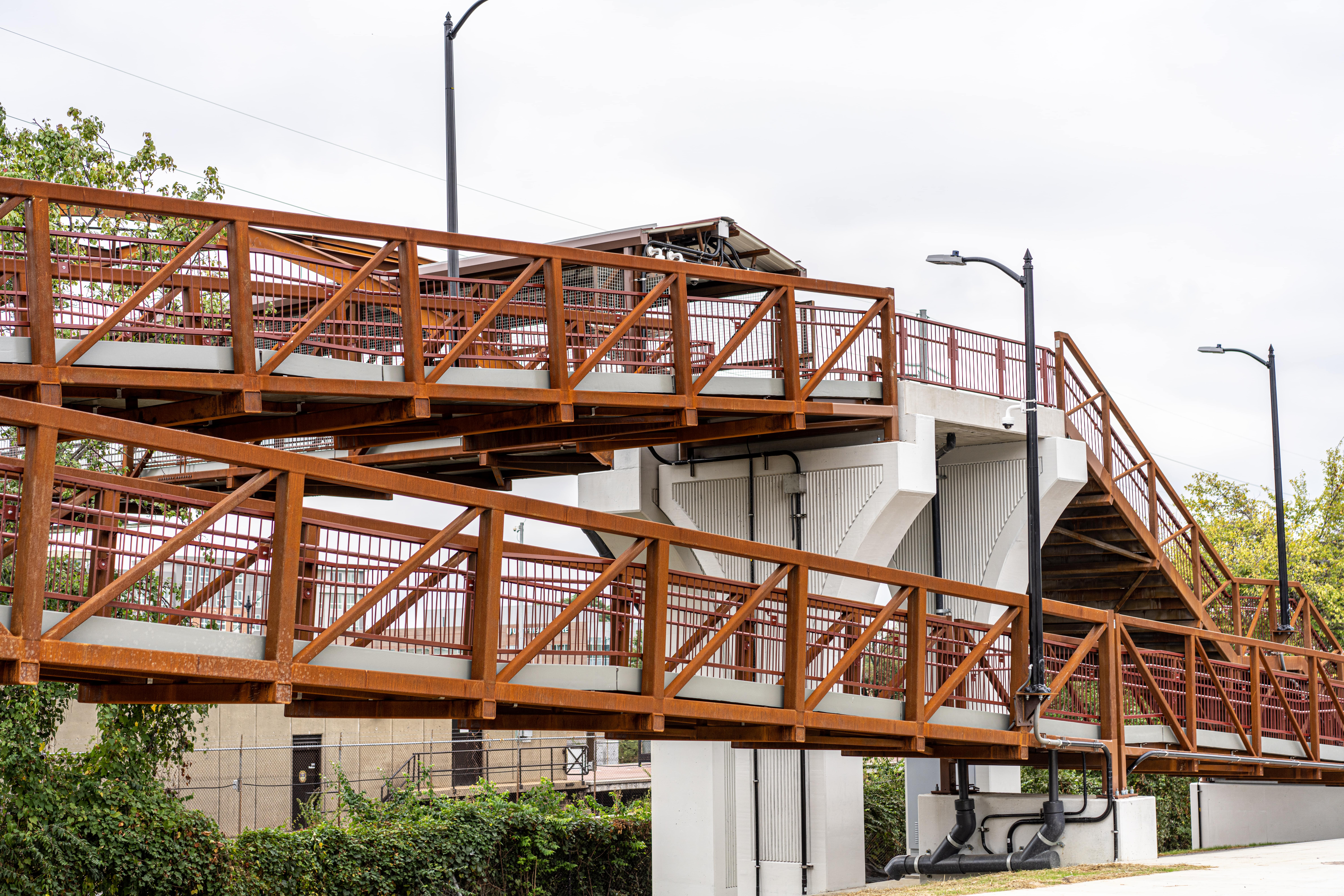Walking and biking have seen a resurgence in popularity. Many commuters are turning their commutes into an opportunity to stay active while reducing their impact on the environment. This increase in walking and biking requires a pedestrian infrastructure that can safely support the trend.
The Problem
Most major bridges, especially in urban areas, have shared-use paths that can accommodate a lot of pedestrians. These paths weren't always built for high numbers of walkers and bikers, and many older paths can't handle today's growing number of commuters.
Many bridges are decades old—or even older—and were built to a different set of standards than today’s structures. Shared-use paths—when they were included at all—were often much smaller than modern pedestrian traffic would demand. Footpaths on older vehicle bridges may only be a few feet wide. These paths can’t handle high volumes of two-way pedestrian traffic and may not fit bicycles at all.
Bridge owners need solutions that keep both pedestrians and drivers safe, but this can be especially problematic in crowded areas with existing structures. Bigger shared paths and concrete bikeways can add weight to pre-existing bridges, causing undue stress on the structure. This is exacerbated by the age of most bridges, which may already be damaged or crumbling due to age and wear. Many of these bridges would exceed their dead load weight limits if wider concrete paths were added.
The Solution
Composite Advantage's FiberSPAN deck panels provide the answer to both the space and weight constraints. These fiber-reinforced-polymer (FRP) composite panels can create decks, cantilever sidewalks, and fully prefabricated footpaths with functional features like drains and light post supports.
The benefits of using FiberSPAN panels include:
Lightweight Paths
The weight of this decking is 1/5 of the total dead load of reinforced concrete decking. The panels themselves weigh between 4-9 pounds per square foot. The addition of stringers, railings, and other supports brings the weight up to only 13 psf. This means that the material is safe to add to existing bridges that face strict weight restrictions.
Replacing narrow concrete footpaths with wider FRP paths can actually reduce the total weight because of how light the material is. In addition, the weight of cantilevered paths is drastically reduced because the decking is the heaviest component of the construction. Replacing concrete with FiberSPAN makes an immediate reduction in the total weight and strain.
Fast Construction
FiberSPAN decking is prefabricated for quick and safe assembly. This keeps construction crews safer when they're working in congested or high-traffic areas. Each decking unit can also be fabricated to include the following functional features:
- Cross-slopes or crowns
- Curbs
- Drainage scuppers
- Electrical boxes
- Grating
- Light post supports
- Non-slip surfaces
Lifetime Safety
These paths require zero maintenance. The durable non-slip surface is ADA compliant and safer than other materials when wet. The sidewalks also have support gussets or trusses at diaphragms and piers to create a stable superstructure. The decking design also accommodates sturdy prefabricated railings.
Cost-Effectiveness
FiberSPAN costs less over the lifetime of the structure and doesn't require any maintenance. Also, the lightweight construction requires less labor to install. The reduced weight can even lower related wear and tear on the original bridge structure, facilitating reduced repair and maintenance costs over time.
How Composite Advantage Can Help
Composite Advantage specializes in FiberSPAN decking and sidewalks that can transform shared-use paths and pedestrian bridges. Bridge owners can increase the capacity of their walking paths while maintaining or even reducing the current weight of the structure. Our experience in the field has shown us that most existing bridges can easily accommodate a lightweight cantilever sidewalk and that some bridges may even experience reduced weight strain after installation.
Contact Composite Advantage today to learn more about FiberSPAN and how it can profitably improve pedestrian walkways and bike paths.
